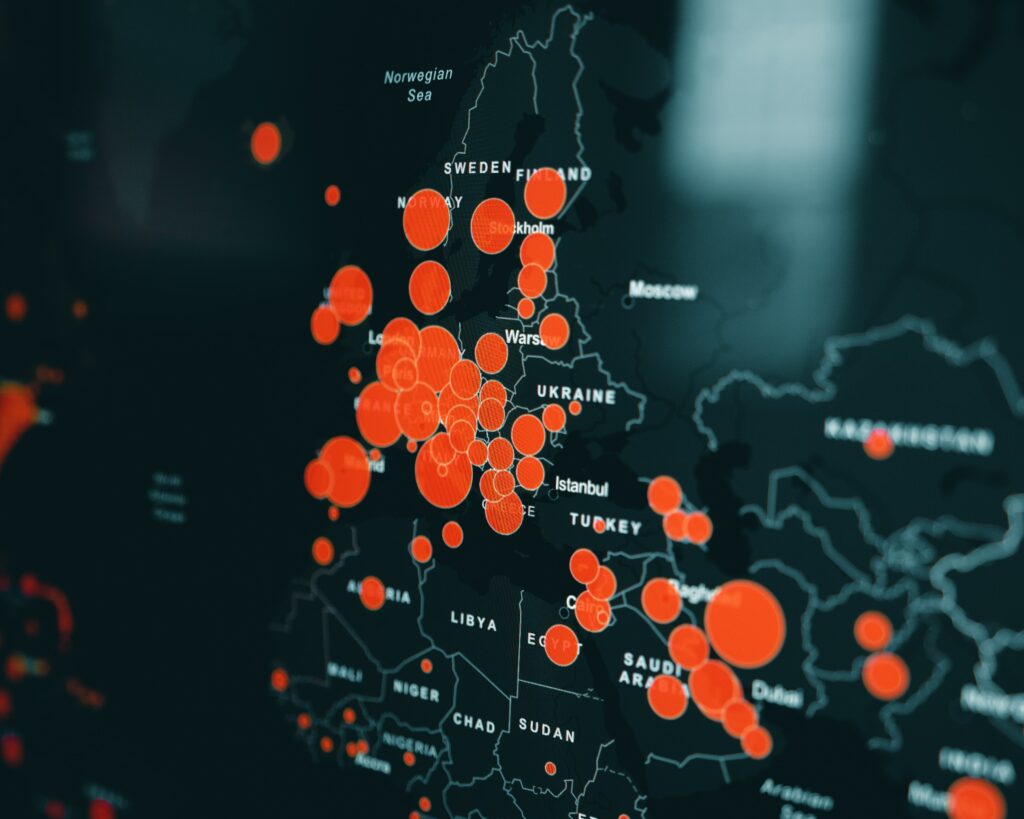The Dark Side of Deepfake: How Cybercriminals Exploit AI for Hacking

In today’s technologically advanced world, artificial intelligence (AI) has undoubtedly revolutionized various industries, bringing about incredible advancements and opportunities. However, with every breakthrough comes a potential dark side. Cybercriminals are increasingly exploiting AI-powered techniques, such as deepfake technology, to orchestrate sophisticated phishing attacks and carry out various cybercrimes. This article aims to shed light on the growing threat of deepfake cybercrime, the methods employed by cybercriminals, and the measures individuals and organizations can take to protect themselves from these malicious activities.
The Dark Side of Deepfake: How Cybercriminals Exploit AI for Hacking
Understanding Deepfake Cybercrime
Deepfake cybercrime refers to the use of AI-powered deepfake technology by cybercriminals to manipulate and deceive individuals or organizations for malicious purposes. Deepfakes are highly realistic audio, video, or image content created using AI algorithms that can convincingly impersonate someone else by manipulating facial expressions, voice, and other visual or audio elements. These manipulated media are then used to deceive victims, exploit their vulnerabilities, and carry out various cybercrimes, including phishing attacks, identity theft, fraud, and extortion.
The Rise of Deepfake Phishing Attacks
Phishing attacks have long been a prevalent threat in the digital landscape. However, with the integration of deepfake technology, these attacks have become increasingly sophisticated and deceptive. Cybercriminals can now leverage deepfake algorithms to create highly realistic and convincing phishing messages that bypass traditional security measures and trick individuals into divulging sensitive information or performing unauthorized actions.
AI-Powered Spear Phishing
Spear phishing, a highly targeted form of phishing, has become particularly alarming with the integration of AI and deepfake technology. By analyzing vast amounts of data and personal information available online, attackers can craft personalized and contextually relevant phishing messages that appear to be from trusted sources, such as banks or reputable organizations. These messages are designed to exploit specific vulnerabilities or capitalize on current events, making them even more deceiving and likely to deceive their targets.
Natural Language Generation and Deepfakes
AI-powered natural language generation (NLG) techniques enable cybercriminals to generate persuasive and contextually relevant content that mimics human communication. With NLG, phishing emails and messages can be customized to exploit specific vulnerabilities or capitalize on current events, increasing their chances of success. Deepfake technology further amplifies the potential harm caused by phishing attacks. Attackers can create realistic audio and video content that impersonates individuals or organizations, eroding trust and facilitating the success of phishing attempts.
Evading Detection with AI
AI not only aids attackers in crafting convincing phishing messages but also helps them evade detection by security systems. By leveraging AI algorithms, cybercriminals can analyze and mimic legitimate communication patterns, making it harder for traditional security measures to flag malicious content. This constant cat-and-mouse game between attackers and defenders highlights the need for innovative and adaptive cybersecurity solutions.
The Darknet: A Breeding Ground for Deepfake Cybercrime
The darknet, a hidden part of the internet that is not indexed by search engines and requires specific software to access, has become a breeding ground for deepfake cybercrime. It serves as a platform where cybercriminals gather, exchange information, and trade various illicit goods and services, including deepfake tools and tutorials. Hacker forums on the darknet provide a fertile ground for cybercriminals to share techniques, collaborate, and plan sophisticated cyberattacks, including deepfake phishing campaigns.
Monitoring the Darknet
Monitoring the darknet for signs of deepfake cybercrime is crucial for detecting and mitigating potential threats. Law enforcement agencies, cybersecurity firms, and other organizations actively monitor the darknet to gather intelligence, identify cybercriminals, and disrupt their activities. By closely monitoring hacker forums and underground marketplaces, security professionals can gain insights into the latest deepfake techniques, identify potential targets, and take proactive measures to protect individuals and organizations from harm.
Protecting Against Deepfake Cybercrime
As the sophistication of deepfake cybercrime continues to evolve, it is crucial to adopt robust security measures to safeguard against these attacks. Here are some strategies that individuals and organizations can employ to mitigate the risks posed by deepfake cybercrime:
1. Stay Informed and Educated
Keeping up to date with the latest developments in deepfake technology and cybercrime trends is essential for staying informed and prepared. Regularly educate yourself and your employees about the risks and techniques involved in deepfake cybercrime. Develop a culture of cybersecurity awareness and provide training on how to identify and respond to phishing attempts and other deepfake-related threats.
2. Implement Multi-Factor Authentication (MFA)
Multi-factor authentication adds an extra layer of security by requiring users to provide multiple forms of verification. By implementing MFA, organizations can significantly reduce the chances of unauthorized access, even if credentials are compromised through phishing attacks or other deepfake-related techniques.
3. Deploy Advanced Threat Detection Systems
Leveraging advanced threat detection systems that utilize AI and machine learning can help identify and block sophisticated deepfake phishing attacks. These systems can analyze patterns, detect anomalies, and proactively respond to potential threats, providing enhanced protection against evolving attack techniques.
4. Foster a Cybersecurity Culture
Creating a cybersecurity culture within organizations is crucial for mitigating the risks of deepfake cybercrime. Encourage employees to be vigilant and report any suspicious activities or potential deepfake attacks. Regularly communicate and reinforce cybersecurity best practices, such as avoiding clicking on suspicious links, verifying the authenticity of messages, and reporting any incidents promptly.
5. Strengthen Authentication and Authorization Processes
Enhance the security of authentication and authorization processes by implementing strong passwords, two-factor authentication, and access controls. Regularly review and update these processes to ensure they align with the latest industry standards and best practices.
6. Regularly Update Security Software
Keeping security software and applications up to date is crucial for maintaining a strong defense against deepfake cybercrime. Software updates often include patches that address known vulnerabilities, ensuring that your systems are equipped with the latest security measures to combat deepfake-related threats.
7. Engage in Darknet Monitoring
Partner with cybersecurity firms or invest in tools and services that provide darknet monitoring capabilities. By actively monitoring the darknet for signs of deepfake cybercrime, you can gather intelligence, identify potential threats, and take proactive measures to protect yourself and your organization.
Conclusion
The rise of deepfake technology has given cybercriminals a powerful tool to carry out sophisticated phishing attacks and other malicious activities. Understanding the methods employed by cybercriminals and implementing robust security measures is crucial for mitigating the risks of deepfake cybercrime. By staying informed, educating users, fostering a cybersecurity culture, and deploying advanced threat detection systems, individuals and organizations can defend themselves against the dark side of AI and protect their valuable information from falling into the wrong hands. Remember, vigilance and proactive measures are key to staying one step ahead of cybercriminals in the ever-evolving landscape of deepfake cybercrime.
Additional Information: Organizations should consider partnering with cybersecurity firms that specialize in darknet monitoring to stay ahead of emerging deepfake cybercrime trends. By proactively monitoring hacker forums and underground marketplaces, organizations can gather intelligence, identify potential threats, and take swift action to protect their assets and reputation.




